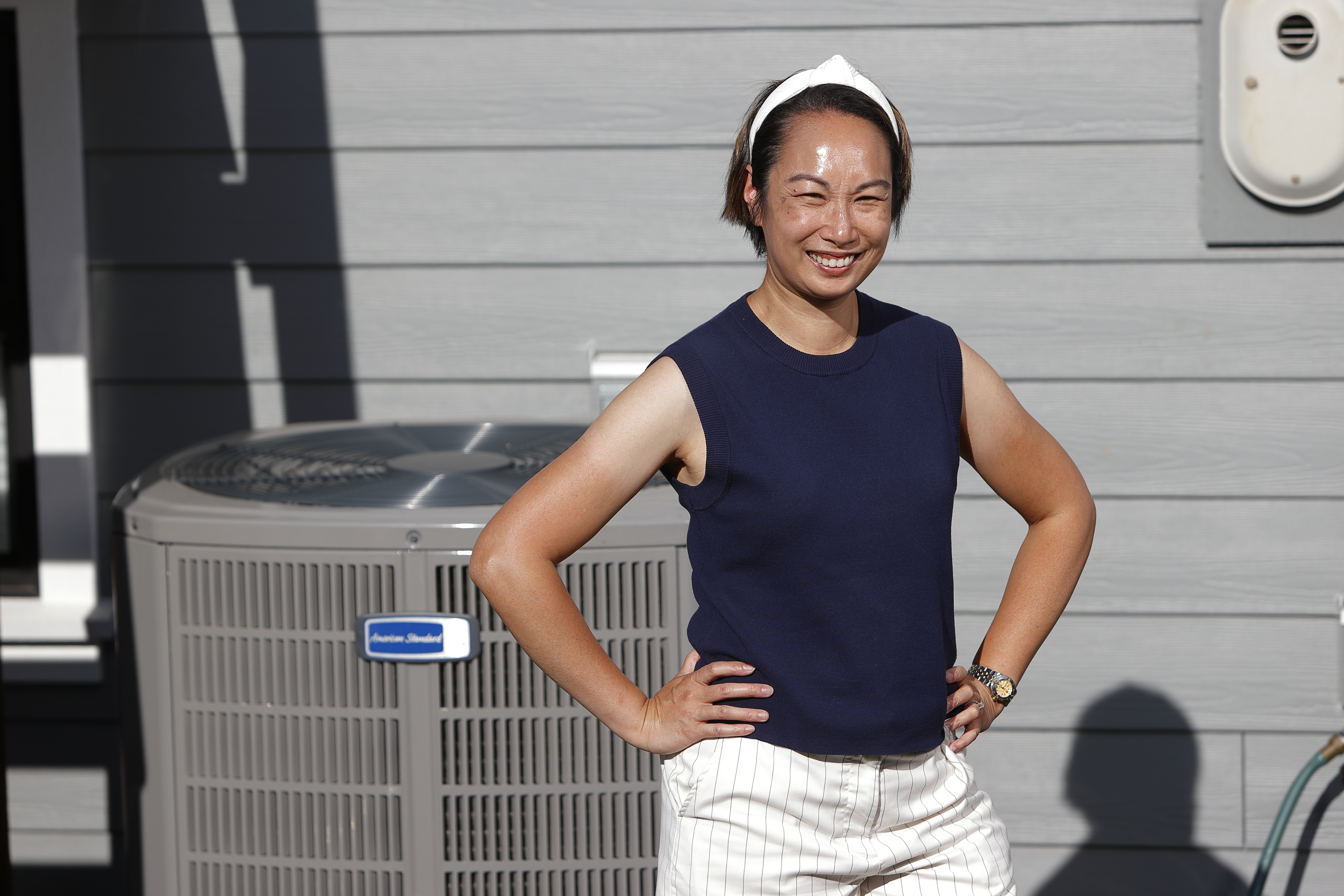
Summary
Home heating retrofits are a significant part of the District of Saanich’s goal to reduce emissions by 50 percent between 2020 and 2030. To help homeowners transition from fossil fuels to electric heat pumps, the district created a pilot program offering zero-interest financing. The pilot was so successful, the district has now moved to a longer-term program to support even more residents in their net-zero transition.
Background
In addition to its goal of cutting emissions in half by 2030, the district of Saanich on southern Vancouver Island is also aiming to reach net zero by 2050. As part of its award-winning 2020 Climate Plan, the district estimated it needed to convert all oil heating systems and 40 percent of natural gas heating systems to electric heat pumps by 2030. The 2023 Building Retrofit Strategy reiterated the need to support residents in making this switch and identified scaling up the Heat Pump Financing Program as a high-impact action for immediate implementation.
Project goals
The district designed a property assessed clean energy (PACE) program that would allow it to help homeowners upgrade from fossil fuel–based heating to electric heat pumps.
Approach
With support from FCM’s Green Municipal Fund (GMF) and its Community Efficiency Financing (CEF) initiative, Saanich launched its Heat Pump Financing Program in April 2022 as a pilot for 50 oil-heated households. Half of the participants were income-qualified, meaning spaces were reserved for those whose household income was below a specified threshold. Participants accessed loans of up to $12,000 at zero percent interest to cover the cost of a heat pump and other related upgrades.
Local consultancy City Green Solutions worked with the district to design and administer the program. Homeowners benefited from a system where the municipality handled payments directly through City Green Solutions. Loans are repaid via property tax bills over terms of up to 10 years. Participants were also encouraged to apply for applicable provincial rebates to further reduce their loan obligations.
Following the pilot’s success, in January 2023, the district decided to extend the program for three years and expand eligibility to natural gas–heated households. The goal is to support a minimum of 200 more homes, financed by a revolving green fund with additional financial support from GMF’s CEF initiative. The extended program also includes tenanted properties and has become more integrated with Home Energy Navigator, the region’s energy coach service.

Barriers
Saanich’s program is the first in the province to use a PACE financing model. Because B.C. doesn't have PACE-enabling legislation, the district had to get creative. While municipalities in provinces with legislation can create a single bylaw and then enter into an individual agreement with each participant, Saanich has to create a new bylaw for each homeowner who joins the program. While this works functionally, it requires a significant amount of administration and limits the potential scaling of the program.
In addition, B.C. municipalities cannot use their long-term borrowing capacity to lend funds to private property owners under a PACE program, which makes it difficult for Saanich and other B.C. municipalities to scale up these types of programs.
Results
The pilot of 50 homes, including 22 income-qualified, was fully subscribed within six months. There are currently 95 active participants in the program, including 45 households who have completed their upgrades and replaced their oil or gas heating systems with heat pumps.
Participants surveyed stated that without the program, they would have delayed or not undertaken a heat pump retrofit. Income-qualified participants in particular are grateful for their zero upfront costs since the municipality and its partner manage contractor payments.
Benefits
While data collection is ongoing, the district estimates that residents who switch to heat pumps should pay less for heating than when they used fossil fuel–based systems such as natural gas–powered furnaces.
In addition, installing heat pumps supports community resiliency. Saanich’s relatively mild climate has meant that historically, few homes had air-conditioning. However, due to the effects of climate change, extreme heat events are becoming more common, making home cooling necessary for residents’ health and well-being.
The program’s commitment to equity as well as its use of zero-interest financing is making electrification accessible to people who might not otherwise be able to make the switch.
Lessons learned
The program initially focused on converting oil-based heating systems to electric due to the significant reduction in greenhouse gas emissions and the significant affordability benefits for participants. However, the district has expanded the program to include homes with natural gas heating, thereby increasing participation and maximizing overall emissions reductions and resiliency benefits.
The district is also working to make the program more accessible. For example, potential participants can visit City Hall for help with their applications if they encounter difficulties completing them on their own.
Next steps
As the program expands, district staff continue to monitor both the program and the broader landscape of federal and provincial rebates and funding programs to ensure they are providing complementary services and meeting the needs of the local community. Over the coming months, Saanich staff will be exploring a range of program updates, potentially including providing subsidized EnerGuide evaluations, increasing the maximum financing amount and allowing new retrofit measures such as electric baseboards to heat pump conversions.
Want to explore all GMF-funded projects? Check out the Projects Database for a complete overview of funded projects and get inspired by municipalities of all sizes, across Canada.

